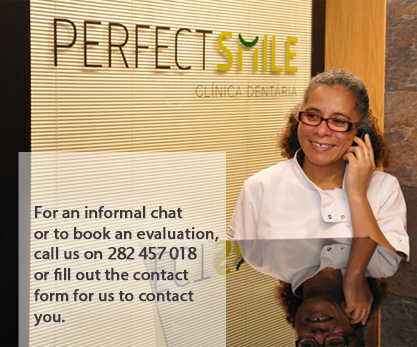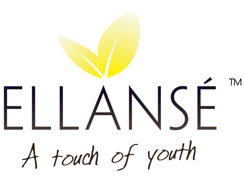 Perioral Dermatitis
Perioral Dermatitis
Perioral dermatitis is a facial rash that causes bumps to develop around the mouth.
In some cases, a similar rash may appear around the eyes, nose, or forehead. Perioral dermatitis (POD) is a chronic papulopustular and eczematous facial dermatitis. It mostly occurs in young women and children, but it may affect men as well. The clinical and histologic features of the perioral dermatitis lesions resemble those of rosacea. Patients require systemic and/or topical treatment, an evaluation of the underlying factors, and reassurance.
The exact cause of perioral dermatitis is not known. However, it may appear after topical steroid creams are applied to the face to treat other conditions. The etiology of perioral dermatitis (POD) is unknown; however, the uncritical use of topical steroids for minor skin alterations of the face often precedes the manifestation of perioral dermatitis. Neurogenic inflammation has been proposed as a pathogenic mechanism. Perioral dermatitis is limited to the skin.
An underlying cause of the perioral dermatitis (POD) cannot be detected in all patients.
Note the following:
- Drugs: Many patients abuse topical steroid preparations. No clear correlation exists between the risk of perioral dermatitis and strength of the steroid or the duration of the abuse. Perioral dermatitis has also been reported after the use of nasal steroids and steroid inhalers.
- Cosmetics: Fluorinated toothpaste; skin care ointments and creams, especially those with a petrolatum or paraffin base, and the vehicle isopropyl myristate are suggested to be causative factors. In an Australian study, applying foundation in addition to moisturizer and night cream resulted in a 13-fold increased risk for perioral dermatitis. The combination of moisturizer and foundation was associated with a lesser but significantly increased risk for perioral dermatitis, whereas moisturizer alone was not associated with an increased risk. Recently, physical sunscreens have been identified as a cause of perioral dermatitis in children. Physical factors: UV light, heat, and wind worsen perioral dermatitis.
- Microbiologic factors: Fusiform spirilla bacteria, Candida species, and other fungi have been cultured from lesions. Their presence has no clear clinical relevance. In addition, candidiasis is suggested to provoke perioral dermatitis.
- Miscellaneous factors: Hormonal factors are suspected because of an observed premenstrual deterioration. Oral contraceptives may be a factor. Gastrointestinal disturbances, such as malabsorption, have been considered as well.
At home topicals:
In mild cases, as well as in most children and pregnant women, individualized topical therapy is generally recommended. Topical anti-inflammatory agents (eg, metronidazole Rozex and erythromycin are administered in a nongreasy base (eg, gel, lotion, cream). Ointments should be avoided.
A prescription cream called Protopic may be prescribed by your doctor. Protopic seems to be most effective in steroid-induced perioral dermatitis Topical antiacne medications such as adapalene Differin and azelaic acid have been used in open studies.
After symptoms have improved, a innovative range called CEBATROL will be prescribed to maintain results. POD is known to increase transepidermal water loss and skin barrier function disorder.
Oral medications for more severe forms of POD: In severe forms of perioral dermatitis, systemic treatment with antirosacea drugs is required. Oral antibiotics, used as an anti-inflammatory drug, for six to 12 weeks may also be prescribed. The drugs of choice are doxycycline (or tetracycline) and minocycline. In unresponsive and granulomatous forms, oral isotretinoin Roaccutane may be considered.
In office treatments:
LED Light therapy (PDT) has been reported to be helpful for perioral dermatitis (POD) although large studies have not yet been performed.
Certain supplements that improve skin conditions may be recommended such as Vitamin D3 and pycnogenol.
Reassurance and education about possible underlying factors and the time course of the disease are critical. These measures help the patient to cope with the disfiguring character of the disease and help to minimize the risk of recurrences. In general, physical activity is not restricted; however, vasodilation of dermal vessels due to strenuous physical exercise may worsen subjective symptoms.
Reassurance and education about possible underlying factors and the time course of the disease are critical. These measures help the patient to cope with the disfiguring character of the disease and help to minimize the risk of recurrences.
Patients have to be aware that initial deterioration may occur, especially if they previously used a topical steroid. The use of all topical preparations, including cosmetics, should be avoided except the prescribed medication. The patient should be advised that remission might not occur for weeks, despite correct treatment.
How are POD, Psoriasis and Other Inflammatory Skin Conditions linked to stress?
When you feel good, you look good, but when you're under stress, your skin is usually the first place to show it.
The interplay between stress and multiple biologic systems in our bodies can trigger the onset of psoriasis and other inflammatory skin diseases, including acne, atopic dermatitis, psoriasis, seborrheic eczema, chronic urticaria, alopecia areata, and pruritus (skin itching).
Researchers use the term, "psychodermatologic disorder" to refer to skin conditions such as psoriasis that can be triggered or exacerbated by emotional stress. Scientists are seeking to learn more about the "brain–skin connection" in psoriasis and other inflammatory skin diseases. They have discovered that stress management can benefit individuals with psoriasis. Patients who listened to a meditation tape while undergoing phototherapy (light therapy) for psoriasis improved four times faster than those who received phototherapy only, as judged by two independent dermatologists. Psychotherapy has been shown to be an important treatment adjunct for individuals with persistent unresolved psychosocial stress-related psoriasis.
What Are the Symptoms of Perioral Dermatitis?
Perioral dermatitis results in bumps around the skin of the mouth, and a rash may appear around the eyes, nose, and forehead. The condition usually is characterized by an uncomfortable burning sensation around the mouth. Subjective symptoms of perioral dermatitis (POD) consist of a sensation of burning and tension. Itching is rare. Often, an uncritical use of topical steroids for minor or even undiagnosed skin alterations precedes the development of perioral dermatitis. Perioral dermatitis tends to be chronic. Patients may have marked lifestyle restrictions due to the disfiguring facial lesions.









